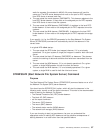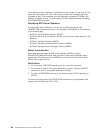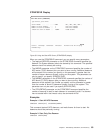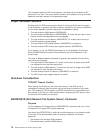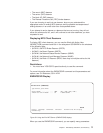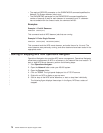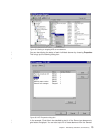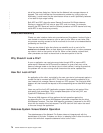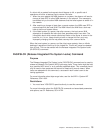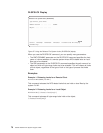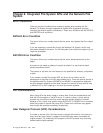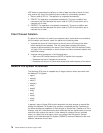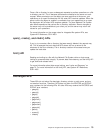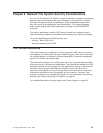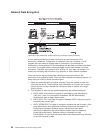If a client with a granted lock request should happen to fail, a specific set of
operations will occur at startup time to recover the locks:
1. When the user restarts the NSM daemon on a system, the daemon will send a
change of state RPC to other NSM daemons in the network. This message is
transmitted only to the other NSM daemons that the failed system is aware of in
the network.
2. After receiving a change of state from a remote system, the NSM uses RPC to
communicate with the local NLM. The NSM informs the NLM that a lock was
held at the time of system failure.
3. If the failed system is a server, then after recovery, the local server NLM
attempts to re-establish file locks that client processes might have held. The
information about which remote clients held locks on the server is stored in the
local file /etc/statd. Users should not edit or change this file in any way.
Improperly changing this file may affect recovery from a server failure.
When the local system is a server, and the client never restarts, then an infinite
backlog of requests will build up for the locked file. This file will
never
be released
from its lock. This can be averted with the Release Integrated File System Locks
(RLSIFSLCK) command.
RLSIFSLCK (Release Integrated File System Locks) Command
Purpose
The Release Integrated File System Locks (RLSIFSLCK) command can be used to
release all Network File System (NFS) byte-range locks. These locks might be held
by a specified NFS client, or on a particular specified object. This command should
only be used to free resources that cannot be freed using normal means. When
locks are released with this command, a successful return code is sent to the
locking application.
For more information about byte-range locks, see the
fcntl
API in
System API
Reference,
SC41-4801.
Restrictions
1. You must have *IOSYSCFG special authority to use this command.
For more information about the RLSIFSLCK command and associated parameters
and options, see
CL Reference,
SC41-4722.
Chapter 7. NFS Startup, Shutdown, and Recovery 75



